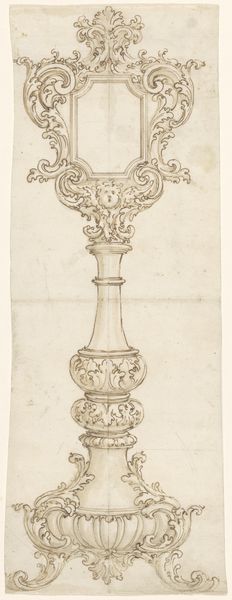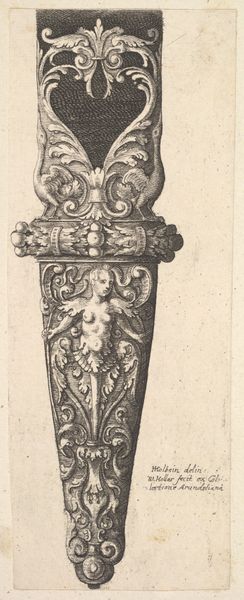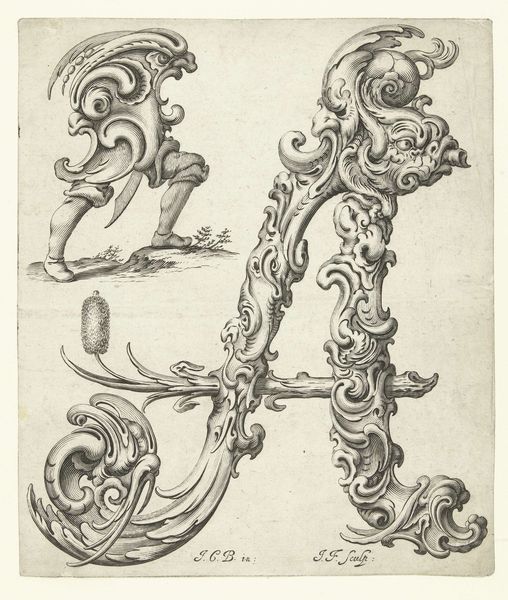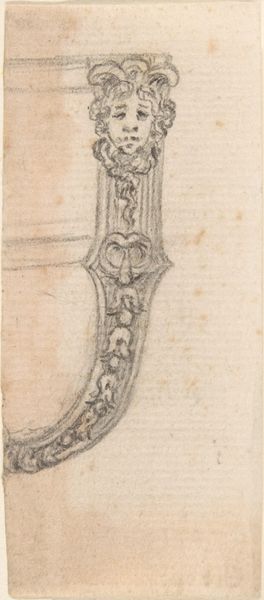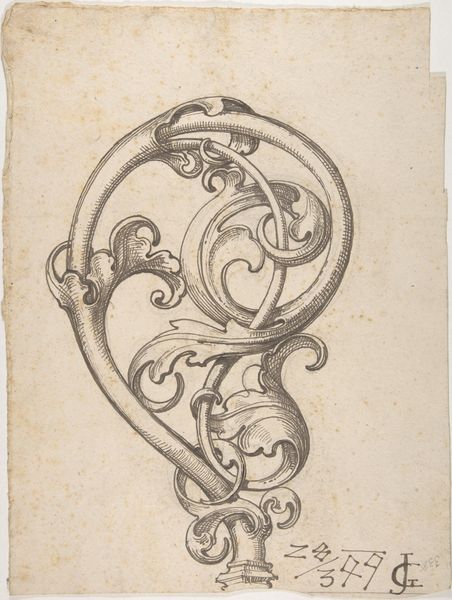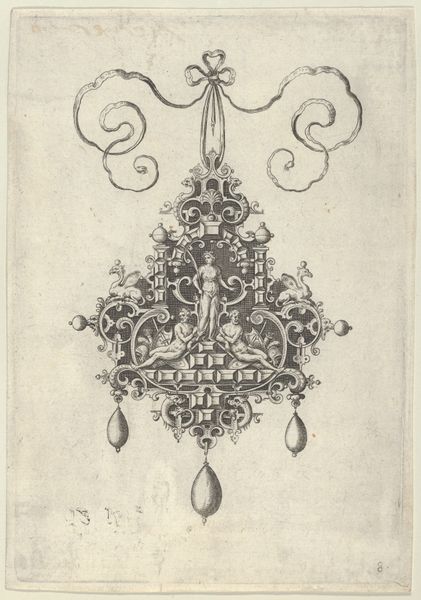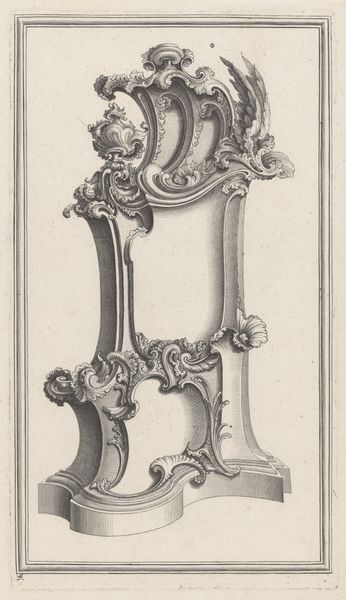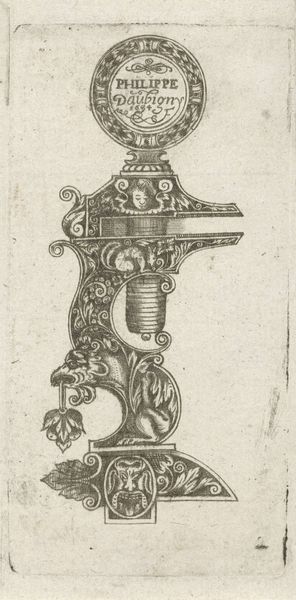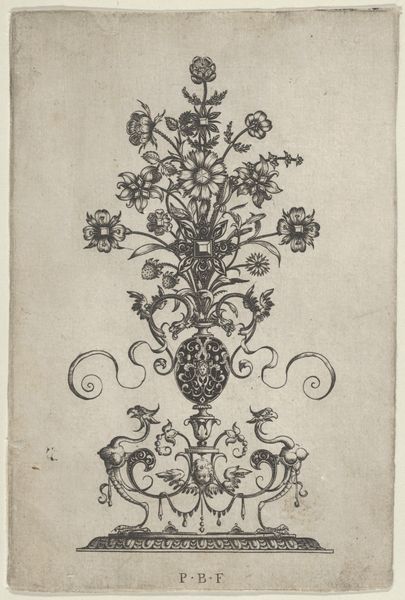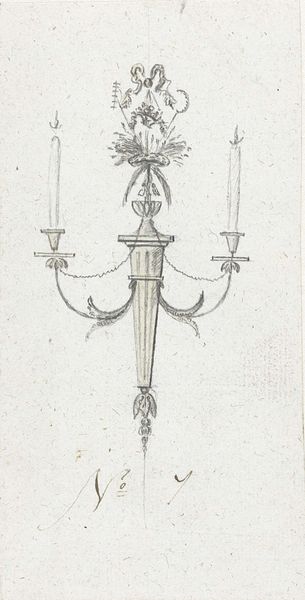
drawing, ink
#
drawing
#
ink drawing
#
baroque
#
form
#
ink
#
line
#
decorative-art
Dimensions: sheet: 10 x 4 1/4 in. (25.4 x 10.8 cm)
Copyright: Public Domain
Curator: Before us, we have an 18th-century ink drawing titled "Decorated Support for Rear of a Carriage," held at the Metropolitan Museum of Art. Editor: It's undeniably elaborate. The curves are almost dizzying, like frozen, ornamental calligraphy. One feels a strong pull of gravity but a yearning to escape into pure form. Curator: Quite right. Its significance lies not in what it represents but in its masterful command of line and composition. The artist explores the Baroque style’s fondness for asymmetrical yet balanced forms. What semiotic structures can we extract? Editor: While you dissect it structurally, I can’t help but place this object in its historical moment. The elaborate design broadcasts a culture obsessed with luxury and the theatricality of courtly life. A carriage wasn’t just a means of transportation; it was a status symbol, a rolling stage. Curator: Ah, but consider how the artist modulates light and shadow to enhance the object's plasticity. See how each curl is designed to play with light. The work exemplifies formal precision. This drawing is more about exploring visual language. Editor: And this visual language had very concrete social implications. Luxury items, such as decorated carriages, were powerful tools in shaping class structures and asserting social hierarchies. Did this opulence trickle down or just create greater chasms in the class system? Curator: Yet, viewing it this way, one misses the sublime rendering! Doesn’t the rhythm of the ink lines elevate the mere concept of a carriage support to something transcendent? It explores fundamental aspects of design. Editor: Perhaps. But its origin can not be forgotten, I would contend that any discussion around aesthetics should include the understanding that art does not emerge in a vacuum. The decorative program wasn't just embellishment. It conveyed authority. Curator: I see how this reading may expand interpretation by situating objects within power dynamics. Now, after deconstructing, does one ever feel the piece remains simply, about the object, to one's sensibility, beautiful? Editor: To me, the beauty lies not in the object itself, but in the cultural insights that can be extracted, and contextualised, with further historical analysis. I wonder about the carriage’s owner… and who, through this support, enjoyed the most comfortable of rides.
Comments
No comments
Be the first to comment and join the conversation on the ultimate creative platform.
